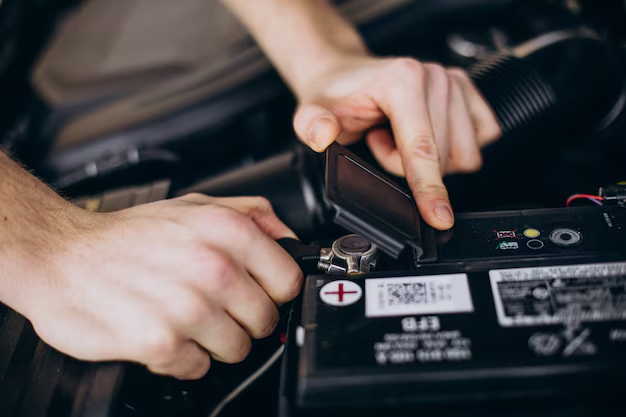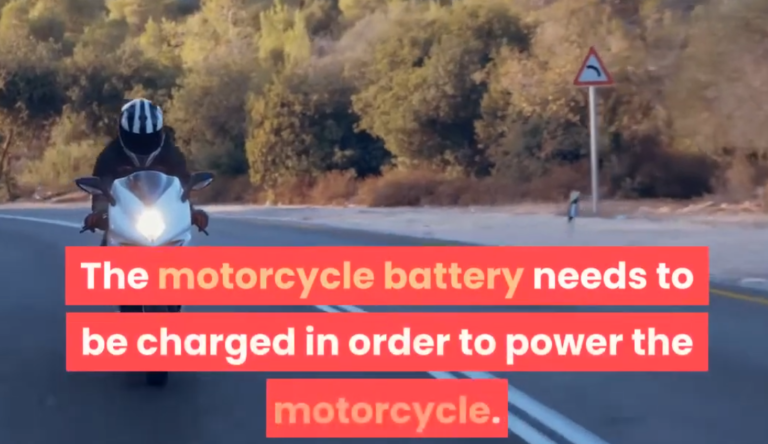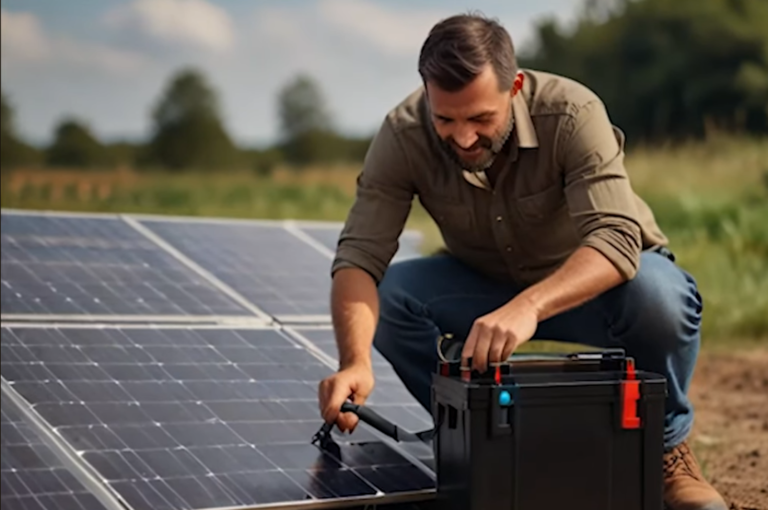How to Charge Auxiliary Battery?
An auxiliary battery plays a crucial role in powering various electrical systems in modern vehicles, from infotainment and navigation to start-stop functions. However, like any other battery, it requires proper maintenance and charging to ensure optimal performance. If you’re wondering how to charge an auxiliary battery, whether in a Jeep, Mercedes, or any other vehicle, this guide will walk you through the best methods. From using a dedicated charger to relying on your vehicle’s alternator, we’ll cover everything you need to keep your auxiliary battery fully charged and functioning efficiently.
Understanding the Auxiliary Battery
The auxiliary battery supports electrical systems such as start-stop functions, infotainment, and safety features. In vehicles equipped with this system, the main battery handles primary functions like engine starting, while the auxiliary battery powers additional electronics.
Charging the Auxiliary Battery in Different Vehicles
General Steps:
- Locate the Auxiliary Battery: Typically found near the main battery, under the hood, or in the trunk. Consult your vehicle’s manual for the exact location.
- Access Charging Terminals: Identify the positive and negative terminals. Some vehicles provide designated points for charging.
- Connect the Charger:
- Positive Clamp: Attach to the positive terminal of the auxiliary battery.
- Negative Clamp: Attach to a grounded metal part of the vehicle or the negative terminal.
- Set the Charger: Configure to the appropriate voltage and current settings as specified in your vehicle’s manual.
- Monitor the Process: Allow the battery to charge fully, monitoring the charger’s indicators.
Vehicle-Specific Guidelines:
- Jeep Vehicles:
- Jeep Compass: Accessible terminals are available for charging the auxiliary battery. A battery tender can be connected to these terminals.
- Jeep Grand Cherokee: Charging procedures are similar to the Jeep Compass, with accessible terminals for connecting a battery tender.
- Mercedes Vehicles:
- The auxiliary battery is usually located on the right side of the engine, near the firewall. To charge, connect a conventional charger directly to the battery terminals.
Charging Without a Dedicated Charger
If a dedicated charger is unavailable, the auxiliary battery can be charged using the vehicle’s alternator:
- Start the Engine: The alternator charges both the main and auxiliary batteries while the engine runs.
- Drive the Vehicle: Regular driving allows the alternator to maintain the charge of both batteries.
- Monitor Battery Health: Ensure that both batteries are holding a charge; if not, professional evaluation may be necessary.
Common Questions
- Can You Charge an Auxiliary Battery with a Battery Charger?
Yes, a standard battery charger can be used to charge an auxiliary battery. Ensure the charger is compatible with the battery’s voltage and follow the manufacturer’s instructions.
- Can You Charge an Auxiliary Battery in a Mercedes?
Yes, the auxiliary battery in a Mercedes can be charged using a conventional charger connected directly to the battery terminals.
Maintenance Tips
- Regular Inspection: Periodically check the auxiliary battery for signs of wear or corrosion.
- Keep Terminals Clean: Ensure that battery terminals are free from corrosion to maintain a good connection.
- Professional Assistance: If uncertain about the charging process or if issues persist, consult a professional mechanic.
Proper maintenance and charging of your vehicle’s auxiliary battery are essential for the longevity and reliability of your vehicle’s electrical systems. By following these guidelines, you can ensure that your auxiliary battery remains in optimal condition.
Answers to Common Questions About Charging an Auxiliary Battery
Can an Auxiliary Battery Be Charged?
Yes, an auxiliary battery can be charged using various methods, such as:
- A battery charger specifically designed for auxiliary batteries.
- The vehicle’s alternator while driving.
- A solar panel system (if installed).
- A trickle charger for slow and steady charging.
Proper charging ensures the battery maintains its lifespan and functions optimally.
How Do I Charge My Second Battery?
If your vehicle has a second (auxiliary) battery, you can charge it using the following methods:
- Using a Battery Charger – Connect the charger to the auxiliary battery terminals, ensuring correct polarity.
- Through the Alternator – The second battery can charge automatically when the engine runs if your vehicle has a dual-battery system.
- Using a DC-to-DC Charger – If your vehicle has a dual-battery setup, a DC-to-DC charger can regulate and optimize charging from the alternator.
- Via Solar Panels – A solar panel system with a charge controller can also recharge an auxiliary battery, commonly used in RVs and off-grid setups.
What Happens If an Auxiliary Battery Dies?
If an auxiliary battery dies, the following issues may occur:
- Electrical components like infotainment, navigation, or interior lighting may stop functioning.
- Vehicles with a start-stop system may experience issues with restarting.
- Warning lights or error messages may appear on the dashboard.
- In some cases, the vehicle may not start at all if it relies heavily on the auxiliary battery.
If your auxiliary battery dies, you may need to jump-start it, recharge it, or replace it if it no longer holds a charge.
How to Charge a Portable Battery?
A portable battery can be charged in several ways, depending on its type:
- Using a Wall Charger – Connect the battery to an AC power source via the provided charger.
- Via a Car Charger (12V Socket) – Plug the portable battery into the car’s cigarette lighter or 12V outlet.
- Solar Panel Charging – Some portable power banks are designed to charge via solar panels.
- USB Charging – Smaller portable batteries can charge via a USB port from a laptop, power bank, or wall adapter.
Final Thoughts
Maintaining and properly charging an auxiliary battery is essential for ensuring your vehicle’s electrical systems run smoothly. Whether you drive a Jeep, Mercedes, or any other vehicle, understanding the right charging method can help prevent issues like battery failure or reduced performance.
If your auxiliary battery dies, it can cause disruptions in various vehicle functions, from infotainment systems to start-stop features. Fortunately, you can charge it using a battery charger, the alternator, a solar panel, or a DC-to-DC charger. For portable batteries, always follow the recommended charging methods to extend their lifespan.
Regular maintenance, checking for corrosion, and ensuring your battery holds a proper charge can prolong its life and prevent unexpected failures. If you’re ever unsure, consulting your vehicle’s manual or seeking professional advice can help keep your auxiliary battery in top condition.




